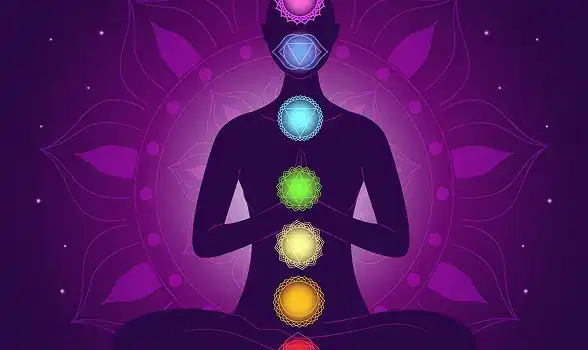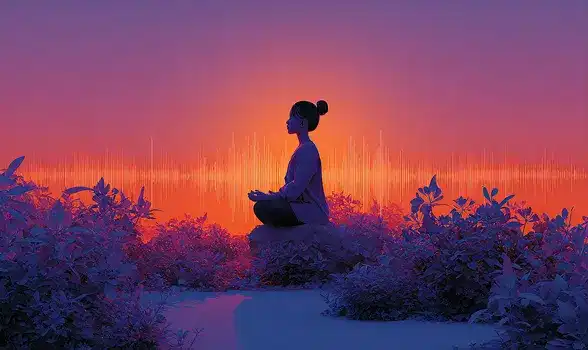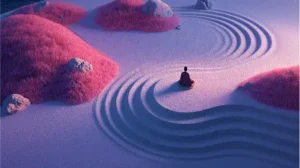Unlocking Kundalini Through Your Chakras: A Path to Energy Alignment

There’s a reason so many ancient systems reference kundalini, chakras and energetic flow in the body. Long before bioelectricity and neuroanatomy were mapped out, wisdom traditions understood that something vital — something unseen — moved within us.
This isn’t abstract philosophy. Today, people from all walks of life are awakening to this energy. They feel heat, vibration, tremors, sudden clarity. Often, they don’t even know the term for it at first — but later they learn: this is kundalini energy chakras in action. And the gateway is almost always through the chakras.
In this article, we’ll explore how chakras and kundalini are interwoven, how this system works, and what happens when the dormant life force at your base begins to rise — not chaotically, but with awareness and purpose.
What Is Kundalini and How It Relates to Chakras
At its core, kundalini is potential. It’s often symbolized as a kundalini rising snake, coiled at the base of the spine, waiting. In many traditions, it’s described as dormant energy — an untapped current that, when awakened, rises through chakras in human body, igniting consciousness.
But here’s where many misunderstandings arise: kundalini and the chakras aren’t separate. The chakras are not just energy centers; they’re access points, filters, gateways. With kundalini energy rising, you get transformed, one chakra at a time.
Spirio, a resource for spiritual growth and modern embodiment, often explores this interdependence — how awakening is not a flash of enlightenment but a layered unfolding. And that unfolding happens through your energetic body.

The Chakra System Explained
The traditional map speaks of seven chakras. But in some systems — including Tantric and Tibetan traditions — references to the kundalini 9 chakras or even kundalini 12 chakras appear. Spirio content dives deep into these variations, offering practical and mystical perspectives alike.
Each chakra holds a distinct frequency:
- Muladhara (Root) — survival, grounding
- Svadhisthana (Sacral) — emotions, sensuality
- Manipura (Solar Plexus) — willpower, action
- Anahata (Heart) — love, integration
- Vishuddha (Throat) — communication, truth
- Ajna (Third Eye) — insight, perception
- Sahasrara (Crown) — transcendence
After all, how many kundalini chakras are there? While seven is the most cited number, what matters more is how these centers function together — as a unified network.
How Kundalini Moves Through Each Chakra
Once activated, kundalini doesn’t just rush upward like electricity through a wire. It pulses. It expands and contracts. It engages each chakra, amplifying whatever’s present — whether it’s clarity or blockage.
You might feel this subtly: tightness in the belly (solar plexus), a lump in the throat (Vishuddha), waves of emotion (heart). This isn’t random. It’s kundalini energy and chakras interaction in real time.
Spirio experts often describe this as an intelligent unfolding. The energy seems to “know” where to go, what to touch. But if you’re not prepared, it can feel overwhelming. That’s why guidance — from teachers, resources, or even self-study through trusted platforms like Spirio — is essential.
Blockages That Prevent Energy Flow
Here’s the part many skip over. Kundalini energy doesn’t move through chakras well through resistance. Blockages might show up as anxiety, depression, disassociation, chronic pain — or more subtly, as avoidance, numbness, even perfectionism. Each chakra stores its own emotional imprints, and when ignored, those patterns don’t just vanish. They calcify.
A blocked throat chakra, for example, might make it difficult to speak your truth. An overactive sacral center might result in emotional swings or addictive behaviors. This is why awakening can feel more like unraveling than expansion. What often surprises people is this: the energy doesn’t cause the chaos. It reveals it.

Practices to Awaken and Align Chakras
There’s no one-size-fits-all when it comes to awakening. But certain tools have stood the test of time — adapted for modern life. Kundalini mantras for chakras use sound as medicine, unlocking stagnation through vibration. Each seed syllable (like LAM, VAM, RAM) resonates with a specific chakra. When chanted with presence, the shift is tangible.
Breathwork is another core practice. Certain kundalini yoga poses for chakras — like spinal flex, ego eradicator, or sat kriya — actively awaken the lower centers and draw energy upward. For some, kundalini yoga to clear the chakras becomes a daily ritual.
Others prefer meditation. A kundalini chakras meditation might include visualizing light rising through the body, pausing at each chakra to observe, feel, or listen. Spirio offers guided experiences designed with both beginners and seasoned practitioners in mind.
Even touch matters. Mudras (hand gestures) and gentle asanas can guide awareness to specific points. Movement — intuitive or structured — is one of the safest, most natural ways to engage the kundalini and chakras connection.
Benefits of Energetic Alignment
When energy flows, life changes — not in theory, but tangibly. People report more clarity, less overthinking. Physical symptoms ease. Emotional regulation improves. Relationships deepen — not because others change, but because your reactivity softens.
Energetic alignment is not about spiritual bypass. It’s about coming into congruence. What you think, feel, say, and do begin to match. You stop leaking energy through indecision, tension, or suppression.
At Spirio, we see this in our community often. People arrive with burnout, confusion, and longing — and gradually shift toward grounded clarity. They don’t transcend their problems; they meet them differently.
Clearing Emotional Patterns in Chakras
Every chakra stores emotional memory. When kundalini and the chakras interact, those memories surface. The root may hold ancestral fear. The sacral may store shame. The heart might carry grief from decades past. The process of release isn’t always graceful — but it is liberating.
Working with these patterns means becoming familiar with discomfort. Spirio encourages this with somatic and energy-based practices that meet the body where it is. There’s no forcing here — only allowing, witnessing, and responding. Sometimes, people ask: what’s the difference between kundalini and chakras? The simplest answer might be this: one is the current; the other is the terrain.
Muladhara to Sahasrara Journey
The ascent from Muladhara to Sahasrara is not linear. It’s spiraling, sometimes backward, often cyclical. You may revisit the root chakra many times, each with new insight. You might feel deeply connected to your crown — and then be triggered back into your solar plexus.
This isn’t failure. It’s integration. The journey is less about “activating” than it is about listening. Kundalini yoga chakras work isn’t about peak experiences — it’s about sustainable presence. Even the wild imagery — like the kundalini snake chakras or radiant auras — are metaphors for deep, internal change.
And yes, kundalini chakras and planets are sometimes connected in Vedic astrology — with each chakra ruled by a celestial body. But you don’t need astrology to sense the transformation. You’ll feel it in your breath, your reactions, your relationships.
As the energy reaches the crown, people often ask: how does kundalini energy relate to the chakras long-term? The real answer? You become the system. The separation dissolves. The map was never the territory — you were.
Conclusion
Awakening isn’t about escape. It’s about remembering. The terms kundalini yoga and the chakras are not reserved for mystics in caves — it’s for you, here, now. It’s for the parent, the artist, the healer, the skeptic. You don’t need to force it. You need to make space for it. Trust that if you’re drawn to this work, you’re already on the path.
And if you want guided support — thoughtful, safe, grounded — Spirio offers both structure and inspiration to walk that path with intention. You’re not alone in this. The current moves through all of us. You’re simply learning how to feel it — again.
Frequently Asked Questions
Kundalini energy lies dormant at the base of the spine (root chakra). When activated, it travels upward through all seven chakras, purifying and energizing each center, leading to expanded consciousness.
You might experience emotional upheaval, physical pain, or mental confusion. Each chakra governs different aspects of your life, so blocks in specific centers manifest accordingly.
Practice regular meditation, chakra balancing, breathwork (pranayama), mantra chanting, and emotional release work. These help clear blockages and strengthen your energy body.
Ideally yes, from root to crown. However, some people experience non-linear activation or awaken upper chakras prematurely, which can be destabilizing if the lower chakras remain unhealed.
You can’t fully control it, but you can support it with grounding practices, spiritual guidance, and healthy lifestyle habits. Awareness and trust are key.
Clarity, emotional balance, expanded awareness, strong intuition, inner peace, vibrant health, and a sense of being “in flow” with life.
Read more

Emerging science behind spiritual practices. Proof they can change both body and brain.

Personal story of a Spirio team member who used to always prioritise mind.

Common signs of Kundalini rising — from energy surges to emotional releases.

Sometimes the only way to heal your trauma is through the body.

Discover life at high vibration. Learn the traits and energy behind true alignment.

Paradoxically, our spiritual transformation often begins when we hit rock bottom.

Your dreams can be messengers that hold the key to your higher self.